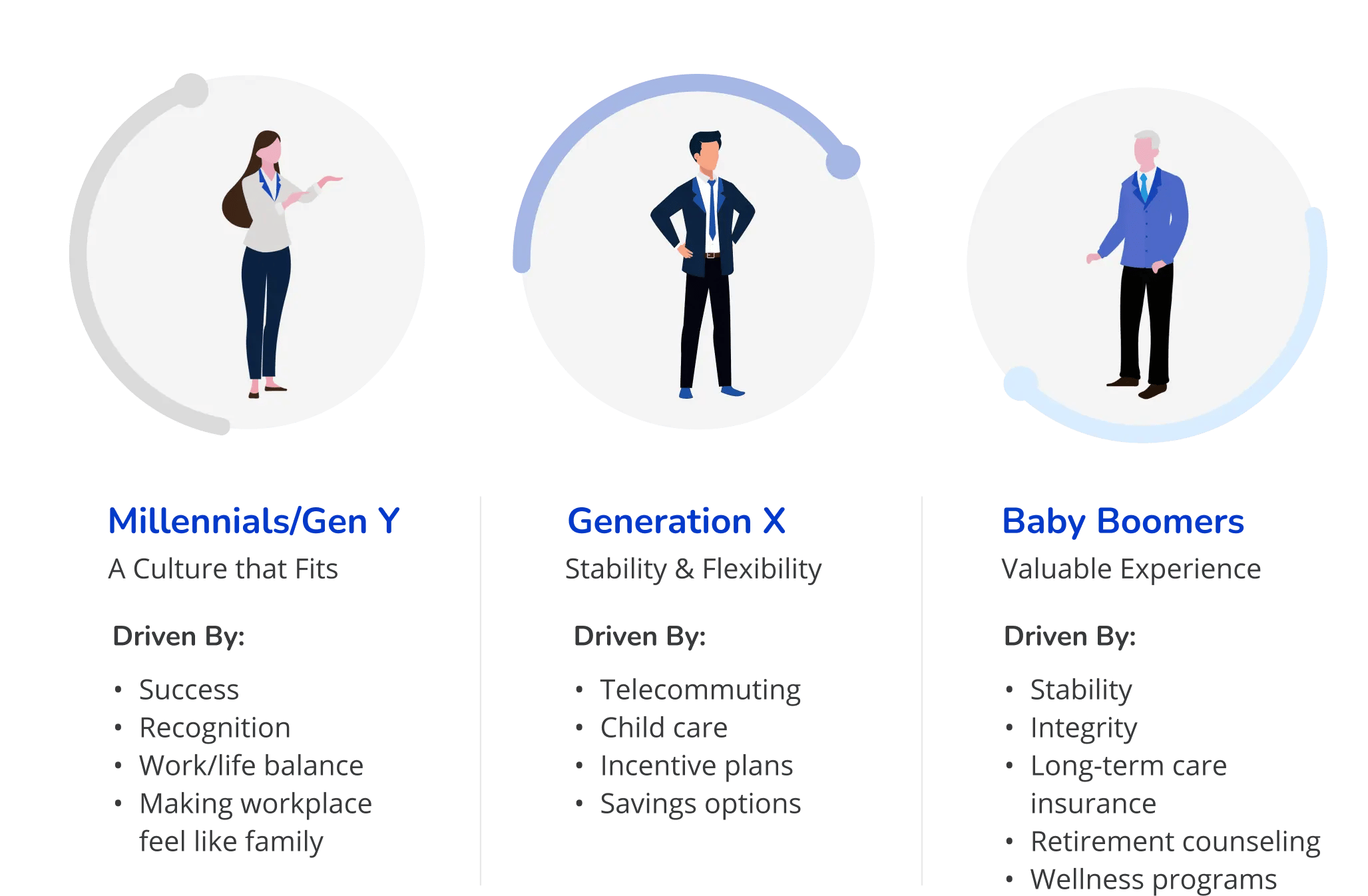6 Things to Consider Before You Fire an Employee
Once you've decided to fire an employee for the good of the organization, be sure these 6 things are covered to protect your company from legal...
Discover the unseen financial burdens of employee turnover and learn effective strategies to avoid them. Equip your business for better talent retention.

In today's competitive business landscape, employee turnover comes with hidden costs that significantly impact an organization's bottom line. Do you know your own employee turnover rate and the cost that comes with it?
According to the U.S. Bureau of Labor Statistics Report, the average employee turnover rate for U.S. jobs is 47.2%, which includes both voluntary and involuntary turnover. In other words, nearly half a U.S. company’s workforce either quits (voluntary) or is fired/laid off (involuntary) over the course of a year.
Note: Although this is an average, think about your own employee turnover rate to gauge how your business is doing. A healthy employee turnover rate is one that benefits your business, offering more opportunities than challenges. For instance, if the bottom 10 percent of your staff consistently underperforms, a 10 percent turnover rate can be considered ideal, as it allows room for improvement to maintain a strong workforce.
If you’re wondering how to calculate your company’s turnover rate, you can use Stratus HR’s employee turnover calculator for a quick calculation.
Employee turnover is one of the costs of doing business, but it’s an expensive one. It includes more than just the price of hiring and training. You’re also paying in terms of productivity, output, and workplace culture.
Why does employee turnover matter?
Here is a quick, full-scope overview of the costs of employee turnover.
| Administrative | Temporary Stuffing |
|
|
| Remaining Staff | Loss of Institutional Knowledge |
|
|
| Recruiting | Quality |
|
|
| Administrative | Training |
|
|
| Operational | Management |
|
|
Employee turnover can be a costly expense for businesses. When employees leave, it costs you in terms of time and money with administration needs, temporary staffing costs, reduced productivity among remaining employees, and the loss of institutional knowledge.
The effects of employee turnover extend far beyond financial implications; they also permeate the working atmosphere and camaraderie among the remaining team members. The frequent departure of colleagues can lower employee engagement and morale, as they grapple with concerns about job security and manage the pressure of an increased workload.
Consequently, this stress and sense of uncertainty can hamper productivity, as the remaining team strives to maintain their usual performance levels under less-than-ideal circumstances.
Customer service and satisfaction can also feel the sting of employee turnover. As employees part ways with the organization, they carry away their unique knowledge and personal rapport built with clients. This sudden void can disrupt the continuity of service, more so if the departing employees had a specialized skill set or deep-rooted connections with specific clients.
As fresh hires step in, they may need some time to match the efficiency and client familiarity of their predecessors, a transition phase that may lead to temporary customer discontent.
Furthermore, high employee turnover can cast a shadow over the company's reputation and brand image. If the company is seen as having a high churn rate, it may discourage potential future employees from joining, creating an added hurdle in the talent acquisition process.
On a broader scale, public opinion may also be swayed negatively, with high turnover rates prompting questions about the company's stability and longevity. This public skepticism can eventually affect customer loyalty, possibly undermining the company's ability to attract new clients.
Therefore, it's important to underscore the significance of nurturing a consistent workforce, not just for the company's financial well-being. Every team member is a valuable asset, and their stability within the organization is a pillar that supports the company's successful journey.
Understand that one size doesn't fit all age groups. Tailor your strategies to cater to different generations in the workforce.

Employee retention is a far better approach than replacing employees who leave. Businesses can combat high turnover by:
For example, let’s say your high employee retention is directly linked to your HR manager. What happens when that key HR manager leaves your team?
You may see recruitment slow to a snail’s pace as other team members work double time to make up for the open chair. Productivity may also be lost across the organization because vacancies aren’t filling as fast as you need.
Payroll might get handed off to someone else who has to learn the system, a task that has no room for error. Benefits management temporarily falls to another person, while employee issues, concerns, and disputes get pushed to the wayside.
If you could rewind and foresee this HR manager was on the verge of quitting, you would do everything in your power to keep them happy. Although you can be aware of signs that an employee is going to quit, you cannot prevent everyone from leaving.
Because employee turnover affects more than just the open position, there must be a plan before it becomes a problem.
You should work closely with your human resources team or HR partner to develop the right employee retention strategies for your business. These strategies may include the following:
Repeat this process with each employee on a regular basis, at least once a year.
Other employee retention strategies include:
4. Regularly recognize and reward employees for their contributions. This not only boosts morale but also fosters loyalty.
5. Establish regular feedback processes. This helps in understanding employee concerns and addressing them proactively.
6. Ensure that the company's core values align with those of your employees. This creates a sense of belonging and purpose.
7. Use tools like turnover calculators to understand your company's turnover rate and its impact. Data can provide insights into areas that need attention.
8. Engage employees through team-building activities, training programs, and opportunities for career advancement.
When Stratus HR works with clients (some with only a handful of employees, others with hundreds of employees), we always make sure they have the data they need to determine the lifecycle cost of turnover by department and manager. It’s good to have a baseline so you can tell if your retention plan is making a difference and also to know where you need to focus your efforts.
We also provide an HR roadmap for each of our clients. This data helps outline their current processes and areas for improvement to provide insight into how HR is affecting their bottom line.
By the way, if you have a good way of analyzing your turnover and HR data, it will often point you to problems that don’t break the bank to fix. For example, if employee turnover is high on a specific team, it might turn out that the rockstar employee you promoted to manager simply needed management training.
As a business owner, you’ve already sacrificed a lot to put your business on the map. Do whatever you can to avoid sacrificing your best talent without throwing money at everything. Invest the time to create a good retention plan or partner with a PEO that can help. With the right data and tools at your disposal, you’ll be invincible.
For more help with your employee turnover issues, contact your certified HR expert. Not a current Stratus HR client? Book a free consultation, and our team will contact you shortly.
Once you've decided to fire an employee for the good of the organization, be sure these 6 things are covered to protect your company from legal...
Whether you are fed up with your job or ready to make a career move, you should still give proper notice to your employer instead of disappearing on...
High employee turnover is a major concern for companies of all sizes. Understanding the effects of employee turnover, including how your average...